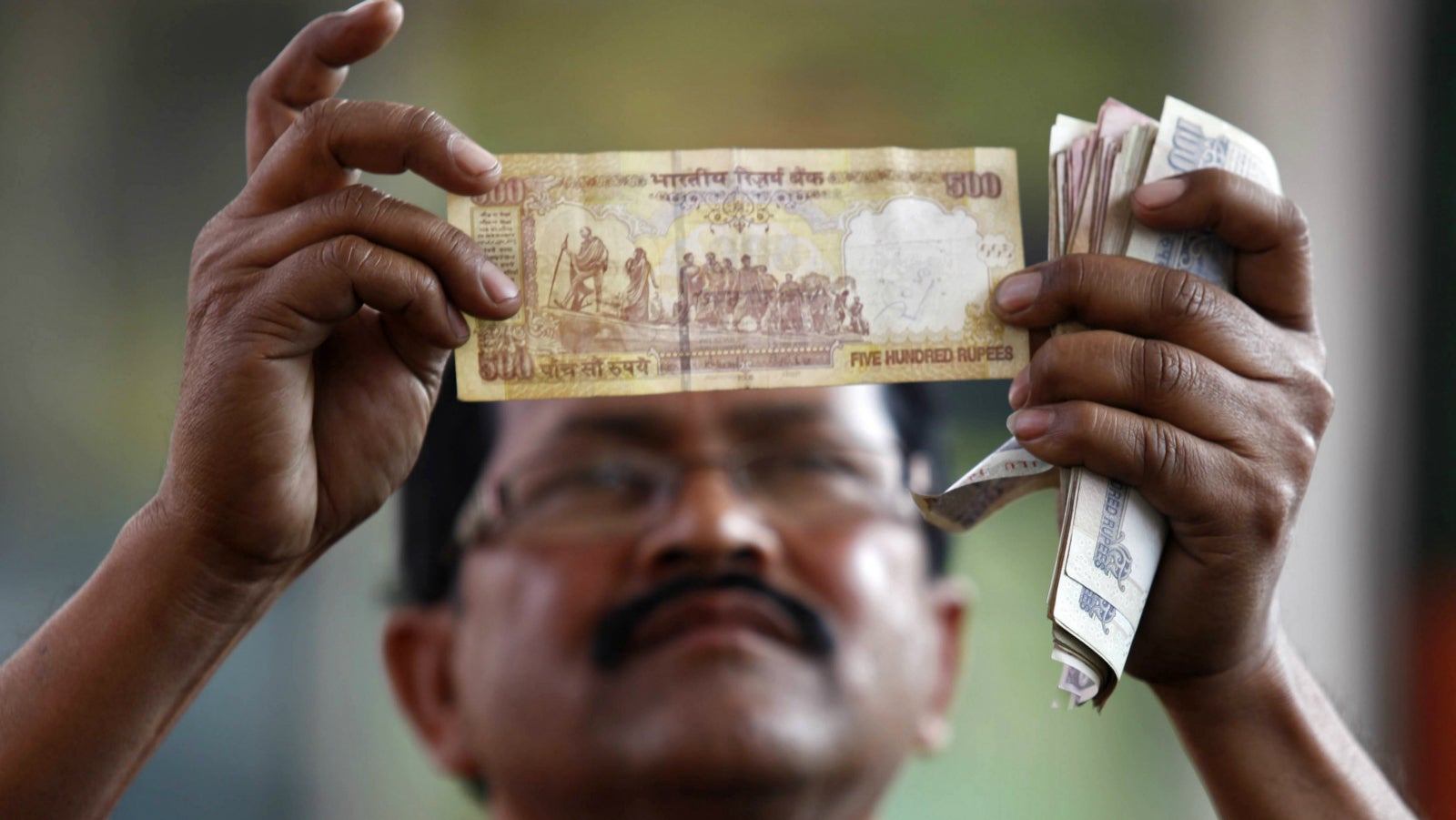Two weeks later: Here’s how demonetisation has hit households, businesses, and the government
Over two weeks after the government’s decision to demonetise Rs500 and Rs1,000 notes in India, rendering a large section of the country’s population cash-less, the effects of the move are becoming clearer.


Over two weeks after the government’s decision to demonetise Rs500 and Rs1,000 notes in India, rendering a large section of the country’s population cash-less, the effects of the move are becoming clearer.
Rs1.28 lakh crore is estimated to be the total transaction cost (including that borne by the government, businesses, and households) of demonetisation during the 50-day window till Dec. 30, which prime minister Narendra Modi has sought to resolve India’s cash crunch. That’s according to the Centre for Monitoring Indian Economy (CMIE), a think tank which tracks business and economic data.
Though the full impact of demonetisation is yet to be estimated, reports of sluggish business and muted consumer sentiment have surfaced from across the country, which has prompted many institutions to revise their estimates for India’s economic growth. On Nov. 23, Goldman Sachs revised its forecast for India’s GDP growth this fiscal year to 6.8%, down from its earlier estimate of 7.6%.
Businesses, both big and small, could suffer losses up to Rs61,500 crore over the next few weeks, CMIE estimated on Nov. 21.
From consumers to businesses, here’s how demonetisation is playing out in the day-to-day lives of Indians.
Households
With less cash to spare, consumers are being cautious about spending.
“Discretionary consumption will go down as consumers spend selectively,” Nielsen, an information and insights company, said in a note dated Nov. 15. Nielsen expects rural India, already reeling under a two-year slowdown, to be hit harder.
“Mandis may experience a shortfall of cash for the purchase of daily essentials including fruits and vegetables, leading to further problems for farmers,” it said.
HSBC’s chief India economist, Pranjul Bhandari, expects the consumption basket of households to shrink. This could especially impact cash-intensive expenses such as on food, transport, real estate, and restaurants, CNBC reported.
“We assume that growth for these components (will) halve…” Bhandari said.
Businesses
Traders, such as shopkeepers, large retailers, and vegetable sellers, have reported a drop in sales since demonetisation. But they’re not the only ones struggling.
The transportation industry that forms the backbone of the country’s logistics business, which brings milk, fruits, vegetables and more to markets and shops, has been hit badly. 70% of vehicles operated by members of the All India Motor Transport Congress (AIMTC), a body representing 9.3 million truckers and over five million bus operators, tourist taxis and maxi cabs, are off the roads, the Hindustan Times newspaper reported.
The automotive, real estate, and gold jewellery sectors, too, have reported a slump in business.
RBI & the government
The Indian government will also have to bear a massive cost as a result of culling old notes and printing new ones.
CMIE estimates that the government and the Reserve Bank of India (RBI) have so far borne four types of costs: printing costs, transportation, additional human resource like in the banking sector, and loss of road toll revenue.
It is likely to cost the government Rs10,861 crore, according to estimates by data journalism website HowIndiaLives.com. This includes the cost of printing new notes and writing off old ones.
Besides, state-owned banks have additional overheads and operational costs to bear, notes CMIE.